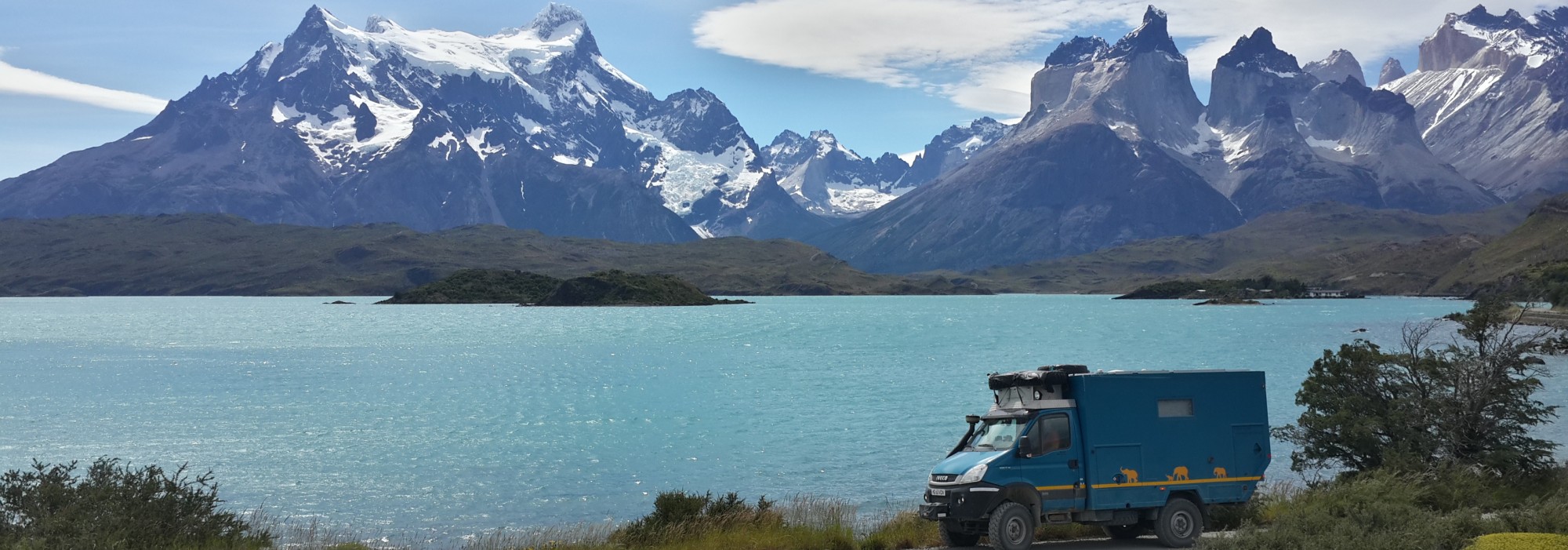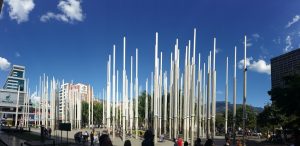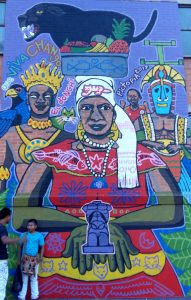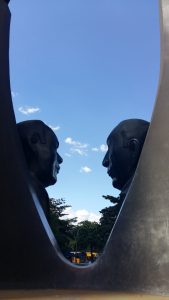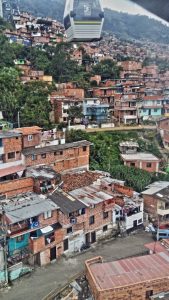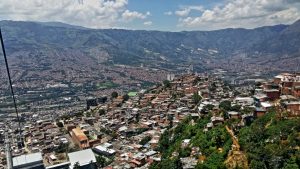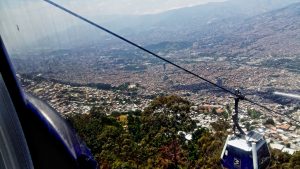Milo is just 25 years old and extremely personable. At the age of 7 years old on his way to school, he saw his first dead body, lying riddled with bullets in the street of his neighbourhood. Eeishh… bit of a grim start to a travel blog, eh? Milo has much to tell us about growing up in the ‘90s in a drug-war-torn Medellin, but first let’s lighten things up and back-track a bit…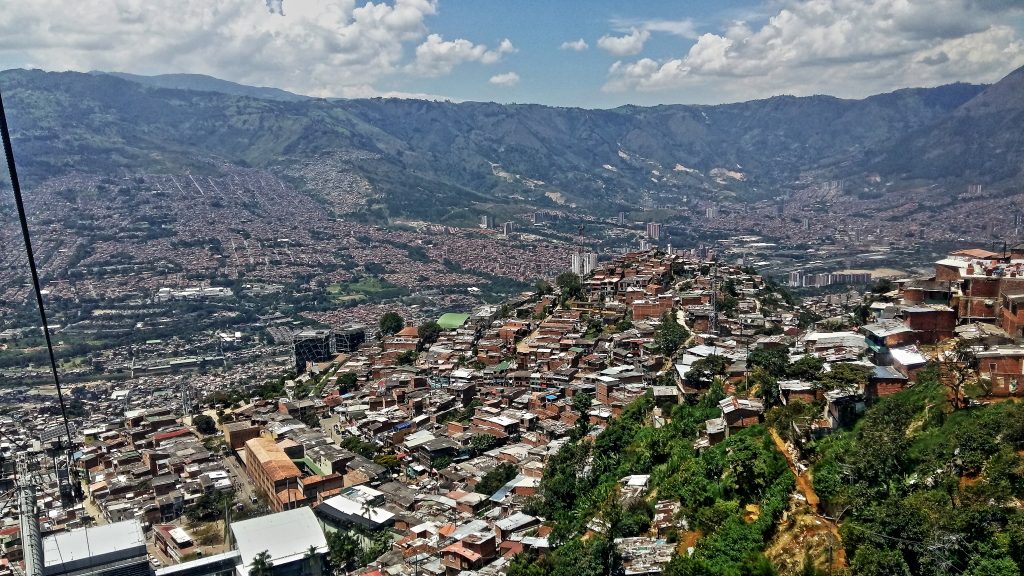
‘Paisa’ City
We’re on our way overlanding through Colombia and have so far been blown away by the friendliness and the generous welcome here. Our latest stage was through the coffee region around Salento and Manizales, but now we’ve reached the former drug-capital of the world.
Now… with our itinerant lifestyle we obviously don’t get to watch much TV. However, one series in particular has been recommended to us several times as a ‘must-see’ when travelling through this region: ‘Narcos’. Narcos tells the tale of Pablo Escobar and the Medellin drugs wars, a story which is in some ways history, but in other ways is still part of the fabric of the city today. So we’ve taken the advice, down-loaded it and are watching it now. How cool is it to watch on TV, scenes filmed in places you’re familiar with?! 😊
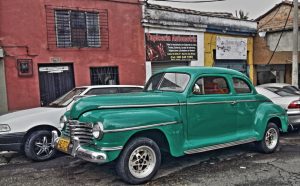
Modern city with ‘classic’ touches
Medellin has a population of over two million people, known in Colombia as ‘Paisas’. It’s not a city of any great historical attractions and the architecture is mostly 20th century concrete – although of course there is, as is de rigueur for most major cities in South America, a plaza with the statue of the continent’s victorious independence leader, Simon Bolívar. The city sprawls far, but the downtown area is small, walkable and well-kept, with a buzzing vibe. ‘Beautiful’ might be stretching credibility just a smidgeon, but ‘ugly’ would be unfair. Medellin is what it is: a modern, thriving business centre with a beating heart in the trading streets of colourful wares.
For our first few days in Medellin we ride the cable-car looking for a fab overview of the sprawling city. And we wander the streets seeking a new relay for our truck’s winch and some geeky electronics for Marcus’ tech-projects (that’s as much as I know or care to understand of such things 😊). The efforts prove that one can indeed buy pretty much anything here if you find the right part of town.
Medellin’s Coded Story
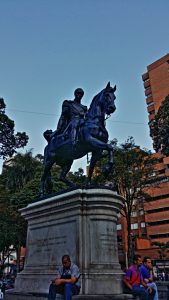
You’re never far from a Bolivar!
So anyway… back to Milo. Who’s Milo? A new crew-member in the truck? Nope. Milo is our guide for a group walking tour through downtown Medellin. This is a service by young people in the city for tourism. It’s free of charge, but discretionary tips are encouraged at the end if you think he did a good job. The aim of the tour is not just to see the sights (cool though that is), but for Milo to put the scenes into the context of the city’s recent history, regale us with accounts of life in the ‘bad old days’ and more importantly, explain how things have changed over his short life-time.
Off we set with Milo to explore Medellin. As we trot down the street after each other, Milo speaks to the group in excellent English. He explains that he relies heavily on the fact that the majority of local on-lookers can’t understand his talks to us. Pablo Escobar, his terror reign and his legacy have left open and particularly sensitive wounds for many Paisas. Milo’s discussions would almost certainly touch a raw nerve if they were delivered on the open street in Spanish.
The thing is… although Milo can conceal his general topic with the use of a foreign language, personal names inevitably transcend language. Milo can’t risk mentioning the Escobar taboo so he speaks in code, referring to ‘the Famous Criminal’. Similarly, he can’t refer to the names of the extreme political groups that have more recently terrorised certain regions of Colombia – FARC and ELN – so he refers to these by raising his right or left fist in the air to indicate the right or left-wing extremist groups.
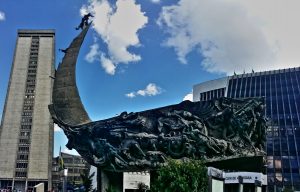
Modern Medellin
Raw though the memories understandably are for many Paisas, it doesn’t take any investigative skill and judgement to sense that Medellin is no longer the danger-pot that it used to be. Check-out the stats: in 1991 Medellin was the murder capital of the world with over 7,500 murders. In 2015 this was down to a mere 550 murders. Admittedly, still a bit of room for improvement, but a staggering reduction. Sure, Medellin isn’t a problem-free society today – during the walk we see a sight common in many major commercial cities today, a noisy protest by civil servants challenging their pay and working conditions. But kids today no longer have the harrowing sight of a bullet-strewn body on their way to school. It’s history.
The Paisa View
So how has the city had bounced back so quickly from such an ordeal? Milo explained the Paisa psyche: they are a ‘glass-is-half-full’ kind of people. Optimists. They play-down the negative, look for the positive and take pride in their achievements. Milo gave the city’s Metro system as just one example of the intrinsic civic pride.
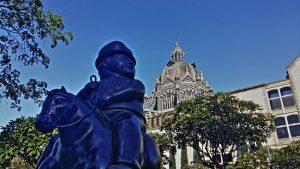
Old and New
Medellin’s metro is the only one in Colombia. Construction started 30 years ago during the city’s darkest days of extreme political corruption, amongst wars not only between the drugs barons, but between key players in the construction and civil engineering industries. Nevertheless, they chugged away. There now runs an extremely efficient service of trains, trams and cable-cars around the city. And here’s the thing… the network is clean and safe, with no defacing, no graffiti, no malicious damage. Every Paisa takes pride in the success of their network. No Paisa would dream of eating or drinking on the trains or in the stations. No Sir! Spillages or litter are nowhere to be seen around here! Colombia’s capital, Bogota is deeply envious of Medellin’s network and Medellin sees it as covert ‘Up-yours!’ salute to its rival city.
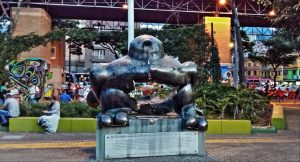
Wounded Bird
One of the sites on the tour route was Plaza de San Antonia. There stand large two bronze sculptures of a bird. One sculpture is in perfect condition, the other has a large hole blasted through the middle – the ‘Wounded Bird’. A music concert was taking place on 11 June 1995, when a rucksack packed with explosives detonated killing 30 people and wounding 200. The perpetrators were never publicly identified and the city’s then Mayor proposed to remove the bomb-blasted bronze bird from the plaza. The sculptor apparently contacted the Mayor and asked that it be retained in-situ as a reminder of the atrocity and a memorial to the victims. A plaque was added with the names of those killed and a second bird was added alongside, a copy of the original, to symbolise a new future and hope for the future of Medellin.
So despite Medellin’s recent history, the Paisa character is to look forward, not back. They want more than anything to lose the tag of the drugs history and to be seen a centre for commerce and tourism, but ironically it is partly the drugs-war history that fuels the tourism today. By regional standards, Paisas have a good standard of living and a thriving economy; something else to be proud of and develop for the future.
Milo’s World
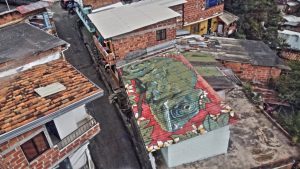
Roof-top art in Milo’s World
To finish the tale of the City, let’s say a bit more about Milo. He is articulate and well educated – a science graduate from Medellin University. He was fortunate enough to win scholarships to study in Europe and the USA, so his English is excellent. So if he is a science graduate, why is he working as a tour guide? Well… his travels gave him a privilege not afforded to many Colombians: a privilege to see the view of Colombia that the tourist sees from their home. He understands where we’re coming from and how our perceptions have been formed, so he wants us to understand the real story of Medellin. He wants help change our perception of his city and his country. He’s doing a good, no, a GREAT job.
Link to next blog: Central Colombia Link to full South America Blog
Medellin Photo Gallery
- In South America, you’re never far from a Bolivar!
- Old and New
- Roof-top art in Milo’s World
- Wounded Bird
